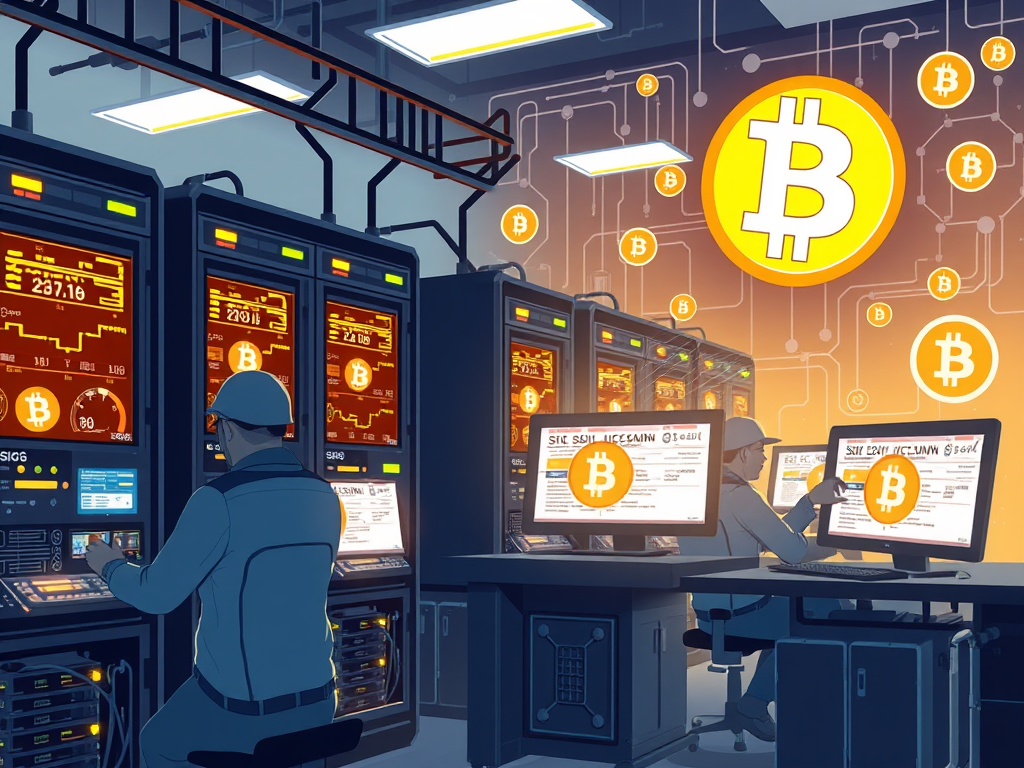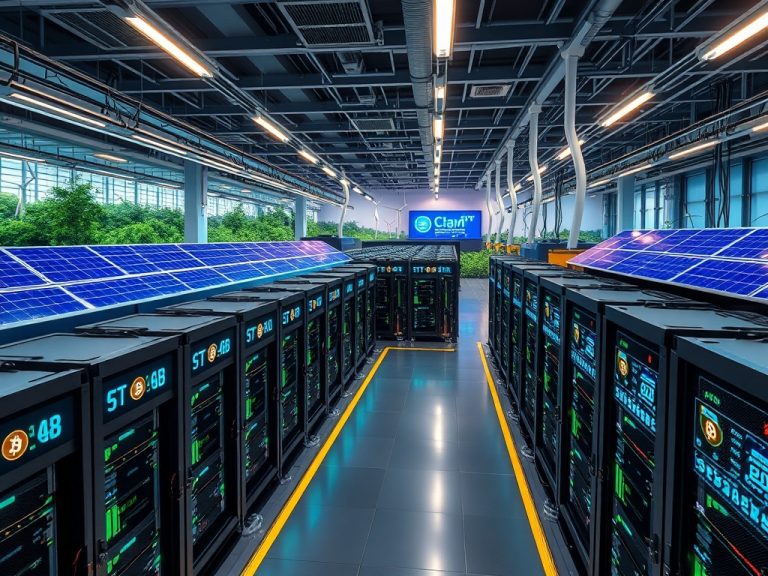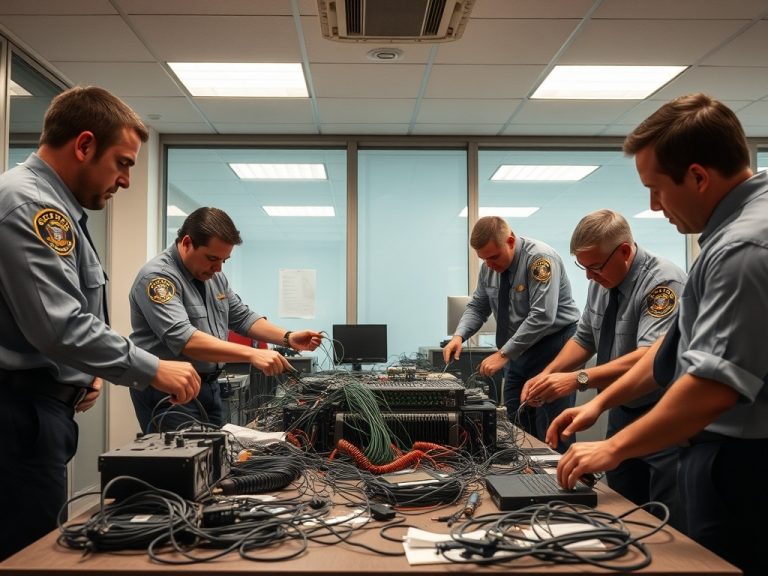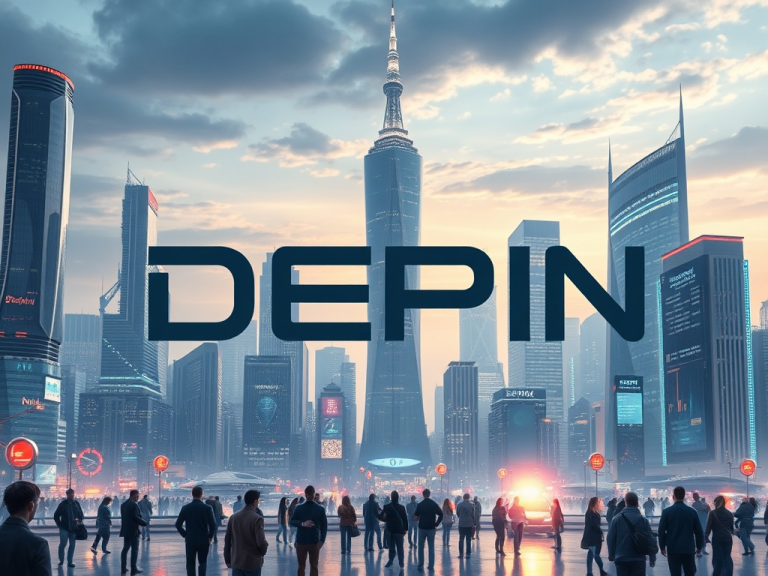
Bitcoin mining is an exciting way to participate in the cryptocurrency world. It involves using computers to verify transactions and, in return, earn bitcoins. This guide will walk you through the basics of getting started with Bitcoin mining, covering everything from hardware to profitability.
1. What is Bitcoin Mining?
Bitcoin mining serves two main purposes:
- Validating Transactions: Every time someone sends or receives bitcoins, that transaction needs to be verified. Miners check these transactions and add them to the Bitcoin blockchain, which is a public ledger.
- Creating New Bitcoins: When miners successfully validate a block of transactions, they receive new bitcoins as a reward. This is how new bitcoins are created.
2. What You Need to Start
Hardware
To mine Bitcoin effectively, you need the right hardware:
- ASIC Miners: These are specialized machines built for mining Bitcoin. They are much more efficient than traditional computers. Some popular models include:
- Antminer S19: Known for its high hash rate and energy efficiency.
- Whatsminer M30S: Another powerful option with great performance.
Power Supply Unit (PSU)
You’ll also need a power supply unit to ensure your miner gets enough electricity. Make sure it’s compatible with your ASIC miner.
Software
You need software to connect your mining hardware to the Bitcoin network:
- Mining Software: This software allows your hardware to communicate with the network. Some popular options include:
- CGMiner: A widely used mining software with a user-friendly interface.
- EasyMiner: Ideal for beginners, it offers a graphical interface to simplify the process.
Bitcoin Wallet
You need a wallet to store the bitcoins you earn:
- Software Wallets: Downloadable applications that store your bitcoins on your computer or mobile device.
- Hardware Wallets: Physical devices that securely store your bitcoins offline, offering enhanced security.
- Online Wallets: Web-based wallets that are easy to access but may be less secure.
3. Join a Mining Pool
Mining on your own can be very difficult because of the competition. Joining a mining pool can help you earn bitcoins more consistently:
Why Join a Mining Pool?
- Increased Chances of Earning: By combining resources with other miners, you can solve blocks more quickly and receive more frequent payouts.
- Shared Resources: Pools allow you to share the costs and benefits of mining, making it more manageable.
Choosing a Mining Pool
When selecting a mining pool, consider these factors:
- Pool Size: Larger pools provide more consistent payouts, while smaller pools may have higher rewards but less frequent payments.
- Fees: Most pools charge a fee, usually around 1-3% of your earnings. Make sure to choose one that fits your budget.
- Payout Structure: Understand how the pool pays out rewards. Common methods include:
- Pay-Per-Share (PPS): You get paid for each share you contribute, regardless of whether the pool finds a block.
- Pay-Per-Last-N-Shares (PPLNS): Payouts are based on the shares you contribute when a block is found.
4. Set Up Your Mining Operation
Setting up your mining operation involves a few key steps:
Step-by-Step Setup
- Install Mining Software: Download and install your chosen mining software on your computer.
- Configure the Software: Enter the required information, including:
- Your mining pool’s URL.
- Your Bitcoin wallet address.
- Any additional settings needed for your specific miner.
- Start Mining: Once everything is configured, you can start the mining process. Monitor your miner’s performance and ensure everything is running smoothly.
5. Monitor and Maintain Your Mining
Regular monitoring is essential for a successful mining operation:
What to Monitor
- Temperature: Keep an eye on the temperature of your mining hardware. Overheating can damage your equipment. Consider using cooling fans or ventilation to maintain optimal temperatures.
- Performance Metrics: Track your hash rate (the speed at which your miner solves problems) and earnings. This helps you evaluate whether your mining setup is profitable.
- Software Updates: Regularly check for updates to your mining software to ensure you have the latest features and security improvements.

6. Understand Costs and Profits
Mining has various costs, which you need to consider:
Key Costs
- Electricity: This is often the largest ongoing expense. Calculate how much you’ll spend on power based on your miner’s energy consumption and your local electricity rates.
- Hardware Costs: Factor in the initial investment for your mining equipment. ASIC miners can be expensive, so consider your budget carefully.
- Pool Fees: Remember to include the fees charged by your mining pool in your calculations.
Profitability Calculators
Use online profitability calculators to estimate your potential earnings. These calculators take into account factors like:
- Current Bitcoin prices.
- Mining difficulty (how hard it is to mine bitcoins).
- Your hardware specifications and electricity costs.
7. Stay Informed
The world of cryptocurrency and Bitcoin mining is always changing. Here’s how to keep up:
- Follow News Sources: Read blogs, websites, and forums dedicated to cryptocurrencies. Popular sites include CoinDesk and Bitcoin Magazine.
- Join Online Communities: Engage with other miners on platforms like Reddit and Discord. These communities can offer support, tips, and the latest news.
- Watch Market Trends: Keep an eye on Bitcoin prices and mining difficulty. Understanding market trends can help you make informed decisions about your mining operation.
8. Understanding Risks
While Bitcoin mining can be profitable, it also comes with risks:
- Market Volatility: Bitcoin prices can fluctuate widely. A decrease in prices may affect your profitability.
- Hardware Costs: The initial investment in ASIC miners can be high, and there’s no guarantee of returns.
- Regulatory Changes: Changes in laws and regulations regarding cryptocurrency can impact mining operations.
Conclusion
Getting started with Bitcoin mining can be a rewarding adventure if you prepare properly. By investing in the right equipment, joining a mining pool, and staying informed, you can increase your chances of success. Always assess the risks and rewards carefully, and remember that the landscape of cryptocurrency is constantly evolving. Happy mining.





